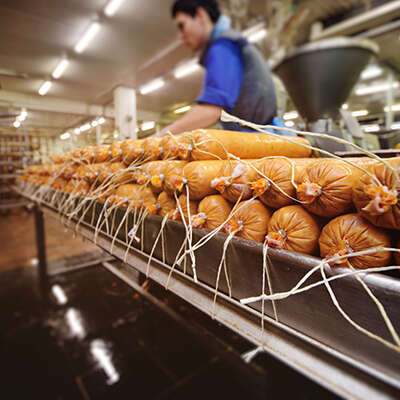Foreign objects found in food, medicine and toys are relatively common, but cause headaches for manufacturers. One of the main issues is identifying where the contaminant may have come from or identifying a false claim. This is where mapping your process equipment with something like the X-MET8000, a handheld X-ray fluorescence (XRF) analyzer, will save you time, money and possibly your reputation.
Essentially, process equipment mapping means you can create and keep a record of the exact composition of every piece of equipment that comes into contact with your products as part of a production line. If that composition is accurate and detailed enough, then you can pin-point exactly where a reported contaminant came from – or state confidently that it didn’t originate from the manufacturing process. Having this information to hand allows quick response times to the claims of product contamination when it happens and if needed, easily take action on the faulty equipment on a product line.

Unwanted particles are a consumer risk if they are found in medical devices and medicine that are intended for use in the body, or within toys that inevitably end up being chewed by small children. However, when food is contaminated with unwanted materials, it really hits the headlines. Despite improvements in quality practices, food recalls due to the discovery of foreign bodies is on the increase, with 28 food recalls in the US alone in 2019 due to physical contaminants.
The reason for this has many factors, from the increased amount of automation in food processing, to the higher instance of processed food available. However, the outcome is the same: a product recall costs money and damages consumer confidence in the brand, leading to further financial losses due to a drop in sales. Being able to determine the source of contamination quickly, or identify false claims, goes a long way to limiting this financial and reputational damage.
Mapping the compositional characteristics of all your process equipment means you must use an analysis technique that’s non-destructive and portable as you can’t remove parts of essential equipment to send to the analysis lab. Handheld XRF brings the analysis to the equipment and production line and is perfect for this kind of quality control.
XRF analysis gives you elemental-level composition of the substance you are analyzing. That substance could be a solid, liquid, powder or paste, metal or non-metal. The analysis usually takes seconds and is completely non-destructive, leaving no mark on the sample. Handheld analyzers, such as Hitachi’s X-MET8000 brings this functionality to a handheld, battery powered instrument, enabling you to easily measure as many surfaces as you like within your production facility and using it potentially for other analysis needs to maximize your investment ROI.
With the X-MET8000 handheld XRF analyzer you can include process equipment mapping as part of your routine maintenance plan. Simply point and shoot with the instrument to get a compositional ‘fingerprint’ of the surfaces of the equipment that come into contact with your medical devices, toys or foodstuffs. By having a record of this map, you can continue to add information when commissioning new pieces of equipment.
As the compositional information is so detailed, you will be able to determine whether any foreign object found in your products came from anything on your production floor. This enables you to discount fraudulent claims very quickly, without having to analyze all pieces of equipment in response to an urgent claim.
In addition to process equipment mapping, you can use the X-MET8000 for many other applications, including:
Get in touch to talk about your process mapping challenges with our experts today.
Get in touchYou might also be interested: